The Quest for Salt
In the Footsteps of Gandhi on Dandi Beach
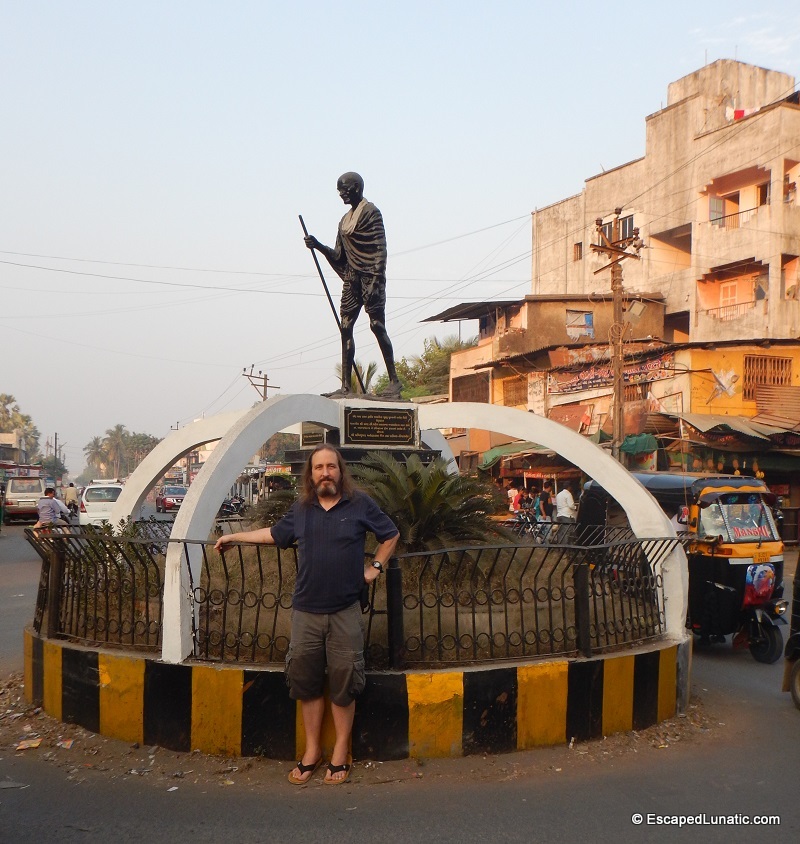
Gandhi and a Lunatic on the way to Dandi Beach
As I write this, I sitting on a lovely tropical beach in Goa, India, recovering from a moderate round of food poisoning (![]() ) and wrapping up my trip to India. Before coming to Goa, my main destination in India was Surat in Gujarat State. It’s a nice city with several very famous temples (which I didn’t get to see the inside of). Doing a little online research, I did see one thing that was a historical must-see, at least for me. I was going to Dandi Beach even if it wasn’t the most photogenic place in the area.
) and wrapping up my trip to India. Before coming to Goa, my main destination in India was Surat in Gujarat State. It’s a nice city with several very famous temples (which I didn’t get to see the inside of). Doing a little online research, I did see one thing that was a historical must-see, at least for me. I was going to Dandi Beach even if it wasn’t the most photogenic place in the area.
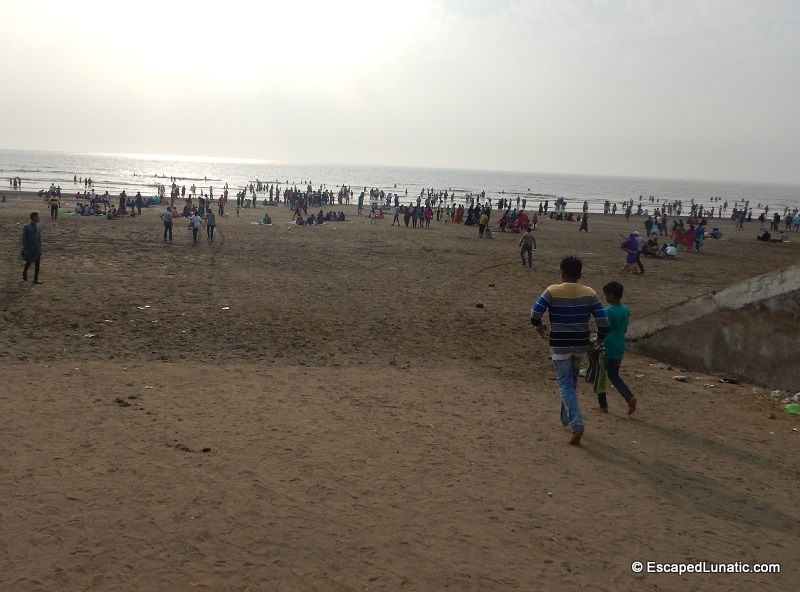
Dandi Beach – Where Gandhi made revolutionary salt
Successful revolutions against oppressive governments need at least one major target to rally the people. Usually, it’s against land taxes and other land issues used to hold down many of the people. Some countries are different. In the US, it was a protest against a tax on tea (later repealed, but why throw away a perfectly good revolution once it gets going?). In India, Mahatma Gandhi surprised quite a few of his fellow revolutionaries by deciding to not just protest the British rules prohibiting Indian citizens from making salt from seawater, but to make a march to the sea to make salt to be a centerpiece of his work in 1930.
When asked, why salt, Gandhi replied, “Next to air and water, salt is perhaps the greatest necessity of life.”
Much to the surprise of nearly everyone (except Gandhi), the Salt March of 1930 was the beginning of the end of for British colonial rule of India. The event is considered to be of such importance that it is commemorated on the back of the 500 Rupee bank note.
Happily for me, Gandhi reached the sea on Dandi beach, not too far from Surat.
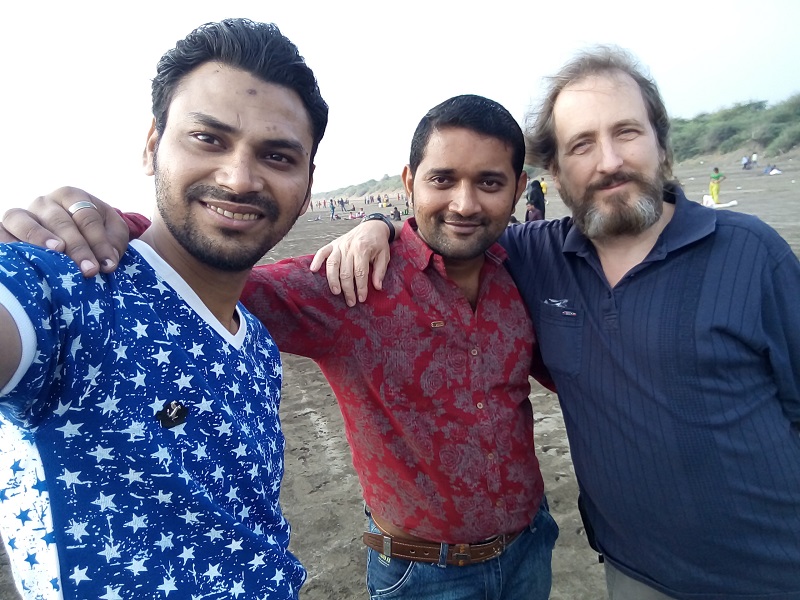
Azhar, Krish, and an Escaped Lunatic at Dandi Beach
I had some thoughts of buying a reflective car sunshade to improvise into a simple solar evaporator, but scheduling didn’t cooperate for me to get to the beach in the middle of the day to make best use of solar power. Instead, I ended up saving a few plastic drink bottles which I brought along. Azhar and I boldly waded out into the surf and secured just over 3 liters of seawater. Once fully evaporated, this should yield a little over 100 grams of salt.
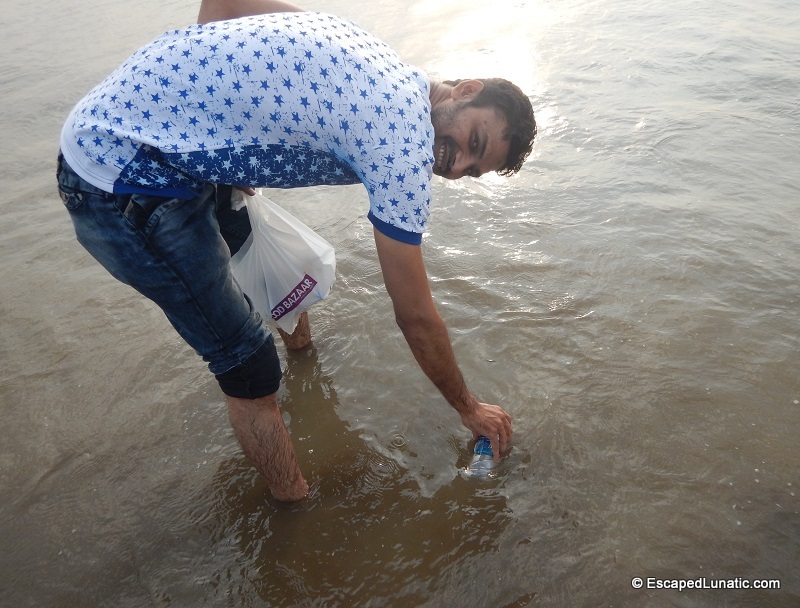
The water was deeper before we put so much into bottles. 🙂

Thirsty after a salt march? Have some bottled water.
My brilliantly laid plans hit their next snag when I noticed that the cap wasn’t secure on one of the bottles. That cost me a couple hundred ml. ![]()
My hotel room window faced nearly north, so I had no easy access to direct sunshine, therefore ending any simple option for solar evaporation. Now what to do with the water? I really didn’t want to carry 3 liters of seawater home.
Luckily for me (and perhaps not for the hotel), my room had an electric kettle. Going all the way to salt would be difficult, but making a brine with 8 or 9 times the salinity of seawater was well within reach.
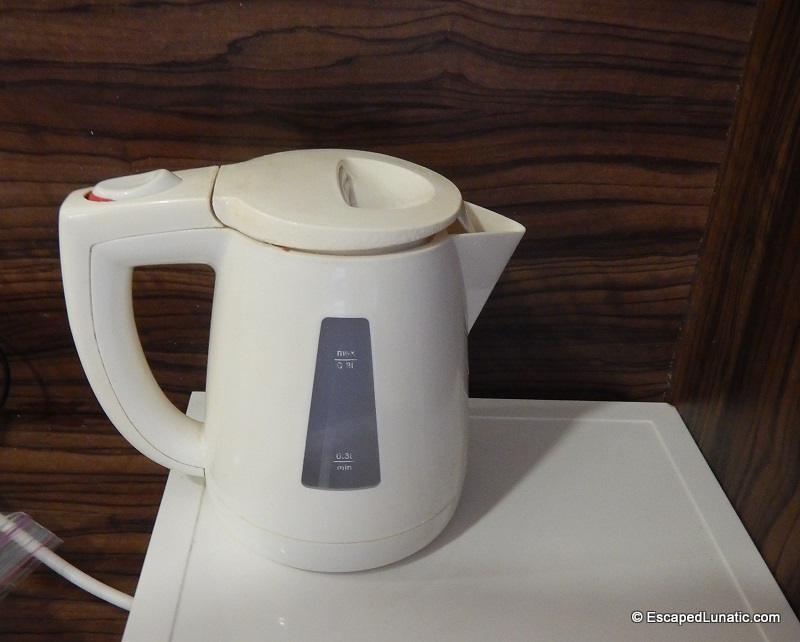
High tech salt water concentration device
First, I had to defend the bottles from the ever-efficient room cleaners at the Ginger Hotel in Surat. Explaining what I was doing would be difficult, so I settled for putting the bottles in the corner with a scrawled note reading “NaCl Recovery In Process. DO NOT TOUCH!”

Scribbled warnings can be surprisingly effective
After first letting the traces of mud settle to the bottom of each bottle, I transferred the water to clean bottles and began “the great boil down”.

L to R: Clean water, leftover mud remnants, next bottle to process
I ended up boiling the kettle over a few times (goodbye to another couple hundred ml), but eventually got all the remaining water down to about 400 ml. I’m happy to report that where the water boiled over and then evaporated on the tea tray, there was salt. ![]()
There was a slight side-effect. Near the end, I noticed a bit of a burned wiring smell from the kettle, as well as a bit of salt crust on the bottom that I couldn’t quite remove. I hope the next person who uses it to make tea realizes that the salty taste is of true historical significance. ![]()
Once I’m back home in DG, I’ll shift over to a glass container and figure out some way to boil off the rest of the water.

Statue of Gandhi commemorating the Salt March
Note: I’m back. It’s Christmas Eve, but I’ve been very busy. I am happy to report that my bottle of brine from Dandi beach did survive running around India and the trip back to DG. I’ll update this once I’ve got a little bit of time to play with the microwave and recover the salt.